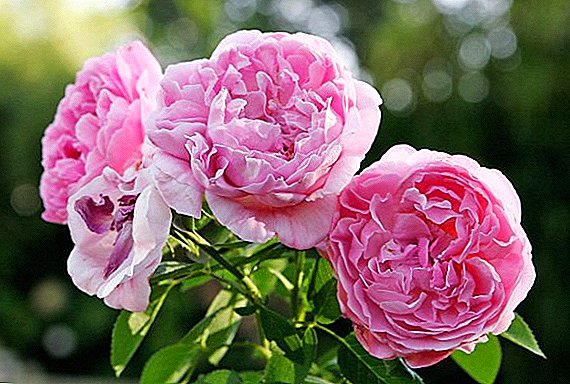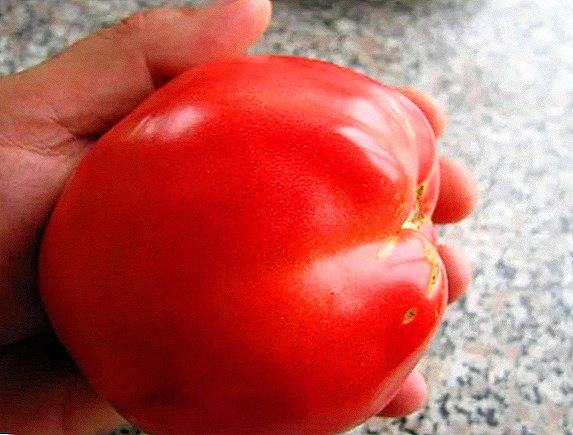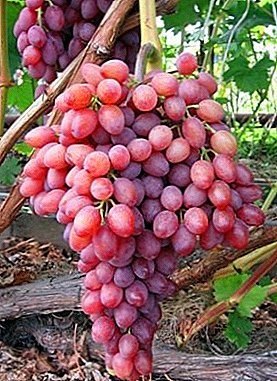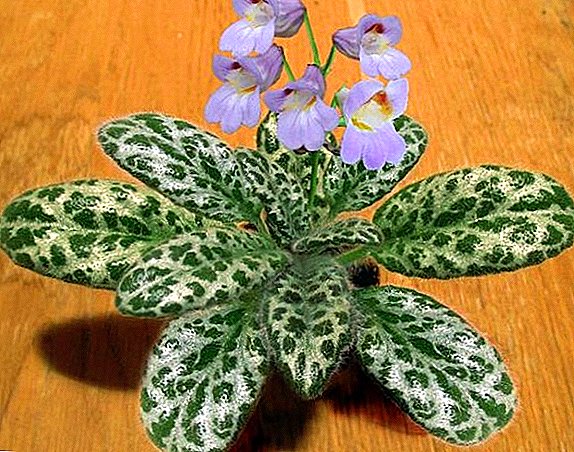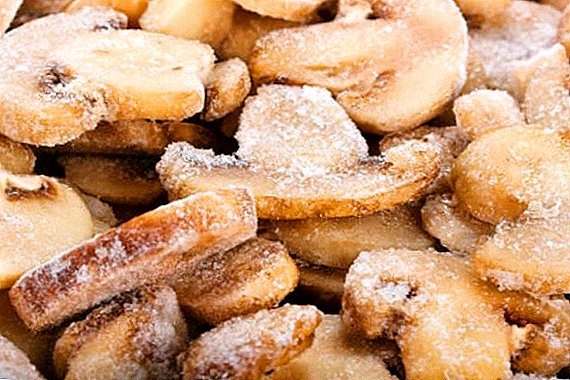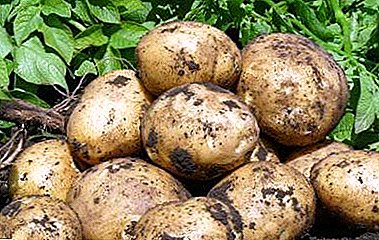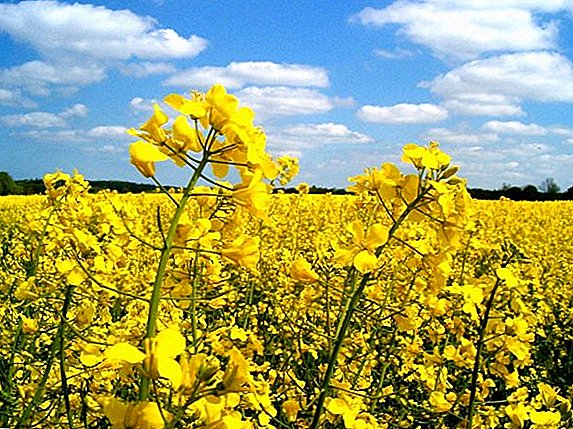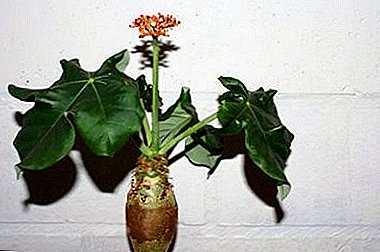
In the collections of gardeners often very unusual plants. They are cherished, cherished and proud of them. Such exotic representatives of the flora include Jatropha.
Description
Jatropha is a perennial plant. Belongs to the family Euphorbia. The genus Jatropha includes more than 150 species, which are represented by grasses, shrubs, small trees. They can be evergreen and deciduous, small and higher, different in shape of leaves and color of the rims. But, like other representatives of milkweed, they contain in the tissues a milky liquid, which is toxic in its chemical composition.
In nature, Jatropha grows mainly in Central America. But some of its species are found in North America, Africa, India. In our country, her can be found in greenhouses, botanical gardens or florist apartments.
Jatropha mostly original shape of its trunk. From the root, at the base, it is wide, and upwards - tapering. By this, it resembles the shape of a bottle. In the thickened part, a plant habitual in its natural environment to the conditions of stony deserts accumulates a supply of water. This is similar to succulents.
Leaves at different types of Jatropha vary in shape, color and appearance. They are rather large, their long stalks end in the center of the leaf. With the arrival of the cold season and the beginning of a period of rest at home, the leaves fall off. With the onset of heat grow back.
Jatropha blooms from early spring. Flowers of small size, of different shapes are collected in umbrella inflorescences or grow singly. Peduncles appear earlier than the leaves begin to grow after the winter abscission. But under favorable conditions, shrubs can bloom all year round.
Types of Yatrof
Jatropha Gouty (PODAGRICA)

Jatropha Podagricheskaya - shrub tall about 50 cm. This is the most frequently cultivated type of Yatrofa in indoor conditions. The barrel of the "bottle" shape is covered with growths.
The leaves of the plant are shaped like maple, dark green at a young age. Over time, their lower surface brightens and is slightly covered with bloom.
In the fall, leaves flutter from the yatropha gouty. The trunk remains naked for the whole winter. In March, first, at its top grow long flower stalks with buds, and then bright red flowers. Then the leaflets begin to peck up.
The plant is poisonous. The people called Yatrofu "the belly of the Buddha."
Jatropha Kurkas (CURCAS)
Perennial shrub, growing up to 5 m. Kurkas oval-shaped leaves with a pointed end. In magnitude may be small - 6 cm - and large - up to 40 cm. Color - light green.
The flowers of the plant are yellow.. Women are collected in inflorescences, and men - single. After flowering, fruits form in the form of a triangular nut with seeds inside.
All parts of the shrub are poisonous, the most toxic are the seeds. They contain a component of Kurzin, which is a potent poison. As a result of poisoning, dehydration begins, death occurs due to heart failure.
The second name Yatrofy Kurkas - "Barbados nut."
Jatropha one-piece (INTEGERRIMA)
The whole Jatropha is an evergreen low tree up to 4 meters high. The leaves are oval, variable. The flowers are small, with five petals, gathered in tassels.
The plant is poisonous.
Jatropha Cleave Multifida (Branched) (MULTIFIDA)

Shrub up to 2 meters. The leaves are large, dissected into 8-10 parts. There are leaves with 12 parts.
Color is dark green with silver otenkom. Flowers red, form a complex umbrella inflorescences. The plant is poisonous.
Jatropha home care
Jatropha is considered a plant very easy to care for.
It is drought-resistant, rarely exposed to various diseases and attacks of pests.
The soil for planting should be loose, with the possibility of good air circulation. It is necessary to mix in equal quantities sheet and sod land, peat and coarse sand. Add small stones, fine gravel or crushed bricks. There must be good drainage in the pot.
Jatropha Transplant every 1-2 years in a larger pot. This is best done in spring or summer. In the cold season, the plant will not tolerate this procedure. Before planting or transplanting a shrub, it is necessary to prepare a suitable-sized pot, at the bottom of which fill up with good drainage. Then cross the plant with a lump of earth and add the prepared soil. A little condense on top. The soil in the pot can be slightly watered or sprayed. Do not forget that Jatropha is poisonous, so all work with it must be carried out with gloves.
It is better to protect the plant from direct sunlight in order to avoid thermal burns of the surface parts.
The temperature in the room with Yatrofoy need to be maintained high enough - 20-25 degrees. During the rest period, from October to March, it can be a little cooler - 10-15 degrees. Lower temperatures can destroy plants.
Air humidity for Jatropha should be average. In warm weather, you can spray the leaves of the bushes every three weeks or wipe them with a damp cloth.
During the growing season, from March to September, the plant needs fertilizing in the form of fertilizers containing magnesium, calcium and sulfur. This will help Jatropha with the growth of leaves and during the formation of flowers and flowering.
Water Yatrofu need to be moderate. It does not tolerate both excess and lack of moisture.
In summer, during flowering, watering can be done every week, in autumn - once a month is enough, and in winter, after the leaves have dropped, you can stop watering before the plant begins to grow.
Propagated Jatropha seeds or cuttings
Seeds are formed in the fruit after flowering shrubs. They need to be planted to a depth of about 5 cm in the soil consisting of sod land, leaf soil and peat, or use ready-mixed soil for indoor plants. When planting seeds, soil the soil only slightly. The seeds of Jatropha have a very dense shell, so before planting they must be soaked. Capacity with planted seeds should be closed with glass or polyethylene to create the required temperature, about 25 degrees. You can plant jatropha seeds directly in pots.
When propagating by cuttings, they must be cut off from the stem with a sharp instrument, dried for a few days at the cutting site and placed in water or moist soil. Within a month, the stalk should take root. Plant rooted plant in a pot.
Jatropha - poisonous plant
All kinds of Jatropha are plant with very poisonous parts. Its seeds are especially poisonous. When working with shrubs, it is necessary to use rubber gloves, to observe all precautions during planting, transplantation, grafting, trimming.
In a room where there are children and animals, the plant should be excluded.
Diseases and pests
To various fungal diseases Jatropha is quite resistant. It can be damaged by spider mites or thrips.
Thrips - small insects that suck the leaf sap. Most often appear at very low humidity. If pests are found, it is necessary to wash the leaves with soapy water or increase the humidity on the shrub. For severe infections, it is necessary to use intexicides, for example. "Fitoverm".
Spider mite - A pest that also sucks sap from a plant. Yellow spots appear on the leaves. It is necessary to fight it, as with other insects, rubbing leaves with water or with the help of chemical preparations.
Jatropha - very original shrub. It is unusual in its appearance and quite unpretentious to care. Having planted such a plant in his apartment, the florist will admire his not very lush, but rather long flowering.
A photo
Next you will see a photo of Jatropha gouty:






